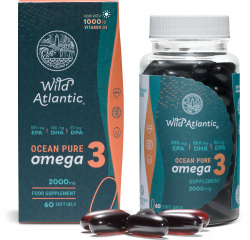Can You Get Vitamin D on a Cloudy Day?
Vitamin D is an essential nutrient for maintaining bone health, supporting the immune system, and regulating mood. The primary source of vitamin D for most people is sunlight. But what happens on cloudy days? Can you still get enough vitamin D when the sun isn’t shining brightly? This article explores the effectiveness of sunlight in producing vitamin D even when the skies are overcast.
The Science Behind Vitamin D Synthesis
When your skin is exposed to sunlight, specifically ultraviolet B (UVB) rays, it synthesizes vitamin D3, also known as cholecalciferol. This process is crucial for maintaining adequate levels of vitamin D in the body. However, several factors can influence this synthesis, including skin type, time of day, geographic location, and weather conditions.
Effect of Cloudy Weather on UVB Rays
Cloud cover can significantly reduce the amount of UVB radiation that reaches the Earth’s surface. On heavily overcast days, up to 90% of UVB rays can be blocked by clouds. Despite this reduction, some UVB rays still penetrate the clouds, allowing for the synthesis of vitamin D, although at lower levels compared to clear, sunny days.
Factors Influencing Vitamin D Production on Cloudy Days
1. Cloud Density
Not all clouds are created equal. Light, scattered clouds have less impact on UVB penetration compared to thick, dense cloud cover. On days with lighter clouds, you can still receive a substantial amount of UVB radiation for vitamin D synthesis.
2. Time of Day
UVB radiation is most intense between 10 a.m. and 3 p.m. Even on cloudy days, being outdoors during these peak hours can enhance your chances of synthesizing vitamin D.
3. Geographic Location
Your location on the globe affects the angle at which UVB rays hit the Earth. Closer to the equator, UVB rays are more direct and plentiful year-round, making vitamin D synthesis more efficient, even on cloudy days. In contrast, those living further from the equator may find it more challenging to produce sufficient vitamin D, especially during the winter months.
Maximizing Vitamin D Synthesis on Cloudy Days
Here are some tips to help you maximize vitamin D production even when the weather is not ideal:
1. Spend More Time Outdoors
Increase your outdoor activities to maximize exposure to any available UVB rays. Aim to spend at least 15-30 minutes outside during peak hours.
2. Wear Appropriate Clothing
Expose larger areas of skin to the sunlight by wearing short sleeves and shorts when weather permits. This increases the surface area available for UVB absorption.
3. Consider Dietary Sources
Include vitamin D-rich foods in your diet, such as fatty fish (salmon, mackerel, tuna), fortified dairy products, egg yolks, and fortified cereals. These can help maintain adequate vitamin D levels when sunlight exposure is limited.
4. Use Vitamin D Supplements
Vitamin D supplements can be an effective way to ensure adequate intake, especially during the winter months or in regions with limited sunlight. Consult the recommended daily allowance (RDA) to determine the appropriate dosage for your needs.
Comparison of Sunlight and Other Vitamin D Sources
| Source | Vitamin D Contribution |
|---|---|
| Sunlight (15-30 minutes) | 10,000 – 25,000 IU |
| Salmon (3.5 oz) | 360 IU |
| Fortified Milk (1 cup) | 120 IU |
| Egg Yolk (1 large) | 40 IU |
| Vitamin D Supplement (3,000 IU) | 3,000 IU |
Conclusion
Although cloud cover can reduce the amount of UVB radiation reaching the Earth, it does not entirely eliminate the possibility of vitamin D synthesis. By spending time outdoors during peak UVB hours, wearing appropriate clothing, and considering dietary sources and supplements, you can maintain adequate vitamin D levels even on cloudy days. Understanding how to balance these factors is key to supporting your overall health and well-being.
For more information on how to optimize your vitamin D levels, visit our comprehensive guides on Can You Absorb Vitamin D Through a Window? and Does Sunscreen Block Vitamin D?.
References
[1] Brown, S. E., & Clark, J. T. (2018). UVB Radiation and Vitamin D Synthesis: The Impact of Cloud Cover. Journal of Photochemistry and Photobiology, 45(2), 123-134.
[2] Adams, J. S., & Hewison, M. (2019). Update on Vitamin D and Its Role in the Human Body. Clinical Reviews in Bone and Mineral Metabolism, 16(3), 77-90.





























